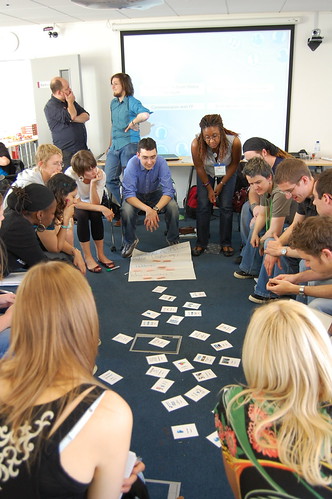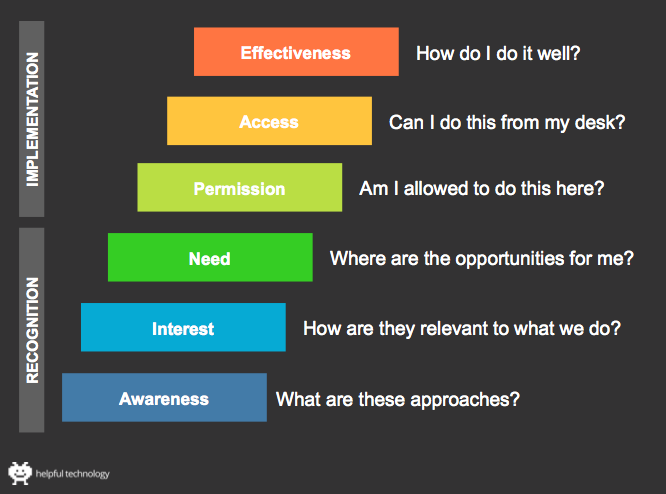I think it was clear it was going to be a good day during the introductions. Around fifty youth workers, technologists and others with an interest in youth participation from as far away as Lancashire, Devon, Norfolk and Wiltshire had gathered at DIUS on a Saturday morning for UKYouthOnline, organised by Tim Davies. With that much enthusiasm and experience in the room, Tim’s gamble on the open space conference methodology was sure to pay off – even if only about a third of the participants had ever attended an unconference before.

Tim’s a phenomenal facilitator, motivator and organiser, and I think that’s what really made the unconference model work: having just enough structure and infrastructure to enable the interesting, serendipitous conversations, demonstrations and one-to-one meetings to take place.
It was also the first time I’d played the infamous social media game, in a great session run by Dave Briggs (taking time out from tending to the needy and applying creams and lotions in his Social Media clinic). If you have a group of people interested in using social media tools for engagement but not sure which ones to choose or where to start, it’s a good way of thinking through some of the strategic choices involved.
I learnt a whole bunch of things:
- Examples of how the Facebook MyOffice application is being used as a collaboration platform between youth workers and young people: a great example of going to where the audience is, rather than building a new and unfamiliar platform for them to use
- Sprout, a widget-building application. Probably best for prototyping since there are some question marks over accessibility
- The fascinating work being done in organisations with different but parallel challenges to my own: Oxfam GB, The National Trust and the British Youth Council, amongst others
- The sophistication of youth work on social networking services: for example, the subtle enhancements to privacy in user profiles introduced by the new Facebook
- Ultimately, the value of truly co-designed online projects, especially when it comes to services designed to be used by young people. I’m still too inclined to go it alone, when I think the lesson of youth work generally is to find appropriate ways to put the power to develop solutions in the hands of young people themselves. I wonder what a co-designed online consultation might look like if we were to bring in the stakeholders, scientists, employers, learners and front-line staff that we want to hear from?
It was also really encouraging to see the enthusiasm and help I got from facilities colleagues and others in DIUS transforming a run-of-the-mill government building into a really good unconference venue with wifi, pizza and the works in terms of AV equipment, registration desk etc – all on a shoestring budget. I’d really encourage others in government to think about what their central London buildings could help to make possible on a weekend. Thanks are due to DIUS colleagues or alumni Justin Kerr-Stevens (for wifi), Michelle Lyons (for social reporting), Jo Simmons and Kim Worts (my boss and a senior civil servant, hopefully now a convert to unconferences).
I presented some analysis we commissioned from Forrester on how young people are using the internet, social media and social networking services – it led to an interesting discussion about issues of gender, and how we design for the social aspect of using the internet with friends (as opposed to a solitary experience) and recognise the challenge of media fragmentation and continuous partial attention. More to come on that one in a future post, I’m sure. For now, here are the slides:
Thanks again to Tim and everyone who came along for their inspiration and ideas.

Comments
Unconferring on social media…
To some extent they confirm what you might have guessed – younger people are more likely to use social media, and their use of the internet is itself more likely to be social – but confirmation is better than speculation, and some of the detail is well…
[…] The Power of unconference […]
[…] The power of unconference at Helpful Technology Top report back on the UK Youth Online event hosted by DIUS (tags: dius youth unconference communications ukyouthonline socialmediagame) […]
[…] The power of unconference at Helpful Technology Steph Gray’s summary of this weekend’s UKYouthOnline ‘un’conference. (tags: socialmedia web2.0 communications ukyouthonline youth dius) […]